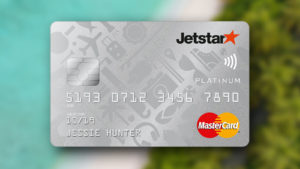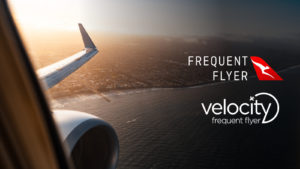Being an adult is a costly exercise! Money seems to evaporate from my wallet no matter how careful I am.
Adding kids to the mix can double or even triple your household bills, so I try to take advantage of rewards programs to get something back from the money I spend every day.
So, I make a point (excuse the pun) to ensure that I earn at least 1 frequent flyer point for every dollar I spend.
In this guide, I’ll show you my budgets and how they result in as many points as possible for our everyday expenses, to try to convince you that you don’t need to be a high flying exec to earn enough points to actually use for a trip.
To achieve this, I have a strict budget and ensure that all my fixed costs, such as groceries, fuel, phone bills, insurance, electricity and rates are paid for with my reward earning credit card – it’s really that simple.
So if you do it right, shop smart and pay off your credit card in full each month, you are actually getting something for nothing. The points you earn come from bills or expenses you already had to pay!
Here’s how I earn my frequent flyer points
Below is a breakdown of exactly how I earn my points over a 12 month period. I have only included my fixed costs; the bills that I have to pay each and every month / quarter / year, as these are my guaranteed points.
I pay half my bills with an ANZ Platinum American Express that earns me 1.5 points for every dollar I spend. Only half my bills can be paid on an American Express as some business and government agencies do not accept Amex as a form of payment.
Things I pay for with American Express – 1.5 Qantas Points per $1.00
| Item | Monthly Cost | Yearly Cost | Points Earned |
|---|---|---|---|
| Groceries | $650.00 | $7,800.00 | 11,700 |
| Home Insurance | $135.00 | $1,620.00 | 2,430 |
| Health Insurance | $122.00 | $1,464.00 | 2,196 |
| Vehicle Insurance | $84.00 | $1,000.00 | 1,500 |
| Mobile Phone | $75.00 | $900.00 | 1,350 |
| Petrol | $70.00 | $840 | 1,260 |
| Internet | $62.00 | $744.00 | 1,116 |
| TV Subscription | $15.00 | $180.00 | 270 |
| Total Points Earned | 21,822 |
The remainder of my fixed costs are paid for with the Jetstar Platinum MasterCard that earns me 1 Qantas Point for every dollar I spend.
Things I pay for with MasterCard – 1 Qantas Point per $1.00
| Item | Monthly Cost | Yearly Cost | Points Earned |
|---|---|---|---|
| House Rates | $252.00 | $3,030.00 | 3,030 |
| School Fees | $166.00 | $2,000.00 | 2,000 |
| Orthodontist | $150.00 | $1,800.00 | 1,800 |
| Electricity | $150.00 | $1,800.00 | 1,800 |
| Car Registration | $58.00 | $700.00 | 700 |
| General Dental | $50.00 | $600.00 | 600 |
| Hair Cuts / Grooming | $40.00 | $480.00 | 480 |
| Total Points Earned | 10,410 |
Over a 12 month period my guaranteed points earn on my fixed costs will be 32,232 points.
That’s enough to get me a one-way flight to Hawaii, Tokyo, Singapore or even Hong Kong.
At this point, I haven’t even added other discretionary expenses like clothing, shoes, school books, presents, travel or entertainment into the equation, which normally earn me another 10,000 points or more on top of my fixed costs.
So that’s about 42,000 Qantas Points per year by just putting my expenses on a points earning credit card, enough for a one-way business class flight from Brisbane to New Zealand with points to spare, or a good start to saving those points for an international trip.
How I advise people who are just getting started
We’ve just run a series on how to get started with earning frequent flyer points, and unsurprisingly, this is where we’d recommend you start. If you’ve got a grasp of the basic concepts, the ‘earn more points from your credit card’ email course should come next, which outlines some points-earning concepts in more depth.
Once you’ve got your head around the different credit cards on the market and picked one that works for you, then you can get started with budgeting.
First, make a list of your fixed costs. This is not only a great exercise to check on the health of your finances but it ensures that you will be able to afford to pay your credit card off in full each month. If you are carrying a balance on your card and are being charged interest there is usually no advantage to earning points.
Next, before you make a purchase, ask yourself: how could this earn me more points, without me spending more?
For example, here are a few simple things that I do to boost my points balance each year without flying.
I set up direct debits. I have fixed costs automatically charged to my card, all I have to do is pay off the balance each month and I will automatically earn points.
When I shop, I go online. Log onto the Qantas Online Mall or Velocity eStore and look at whether you can purchase the item you want from the hundreds of retailers they have on offer.
Most places offer free shipping and easy returns, so not only could you earn up to 10 points for every dollar you spend, you can also shop from the comfort of your own home. AND if you’re like me and pay for your purchase on your credit card you could all another 1 point or more per dollar onto those purchase.
Take for example my Christmas shopping online with David Jones: I spent $200 on various gifts and earnt 1,300 points just by making sure I logged onto the online mall portal prior to starting my shopping.
I use restaurant points portals when I eat out. Make a reservation for your date night and earn points just by going out to dinner. You can earn 100 points per diner with Qantas and 300 points per booking with Virgin.
I look for points earning opportunities when I fuel up: if you are earning points with Virgin Australia, fuel up at a BP and with a swipe of your velocity frequent flyer card you will be earning 2 Velocity points per litre.
When Shopping, I plan ahead: I have a set budget to stick to each week, so to make sure I don’t overspend I always tackle the grocery shopping with a list.
I pre-plan the family’s snacks, lunches and dinner for the week, scan the pantry and fridge for ingredients and only buy what I need. I also keep an eye out for the best discounts in store and stock up on necessities like washing detergent or shampoo when it is half price.
And when it comes to clothing or toys I never pay retail, the end of season sales are my friend! I purchase the kids wardrobe for the next year online (normally at around 60% off retail) and always buy licensed toys like lego when they are on sale. Budgeting and planning can take time and effort BUT all these savings mean that I can afford to take my kids on a holiday each year.
So that’s how I earn my points!
Just because I am not a high flying executive doesn’t mean I can’t earn enough frequent flyer points to make a meaningful difference to my travel costs, enabling our family to travel when we would otherwise be wary of the cost of doing so.
There are hundreds of ways you can earn points on top of your fixed costs each year, and I have only mentioned a handful – keep an eye on the active points offers page here for one, and for notifications of points deals and our tips on using your points, sign up by email or follow on Facebook.






Thanks for the article. I’ve noticed that the annual fees on the two credit cards you mentioned are $425 for the ANZ Black & $149 on the Jetstar Platinum Mastercard(+$39 for an additional card). At a total of $574 and only collecting 40,000 odd points a year, do you think you’re paying too much for your cards? Wouldn’t it be better to get rid of the AMEX and effectively only lose roughly 7,200 points by using the MC but saving $425. Those points are costing you aboutt 5.9c each! Are there any other benefits of the AMEX that make you beleive it worthwhile?
Also, with surchages, I see you advocating paying small surcharges for the AMEX but if I buy an item for $100 and there is 0-1% surcharge on the MC but 3% on the AMEX, do you think it worthwile to pay the extra $2-$3 dollars on the AMEX to score the extra 50 points (Again, those extra points are costing between 4-6c each)?
Thanks,
Walter
that makes it clear that paying 2c per point is not really a good option, would much rather take the cheaper option where available.
I am interested in your point about paying not more than 1.4cents per point. As an example I am currently looking at redeeming points through velocity and a return flight to LA will be 117100 points, the dollar option of paying for this rather than points is $1038.
If I were to pay 1.4c per point would this not mean that the flight has ended up costing more than what it would have been if I had of saved the money and purchased without the use of points?
I am relatively new to the point cards and just want to know if i am missing anything
Thanks
John
Great article.
My question relates to BP Velocity Points.
Each day I use 150L in fuel – 6 days per week.
I have the option of going to an independent station for 98.9c per litre or BP for 102.9c per litre.
The difference is $6.
However at BP I earn 300 Velocity points
Both stations accept my NAB velocity Amex card where I earn 1.5 points per dollar spent.
Is it worth worth paying this $6 for the extra 300 points? And if not what would be worth the 300 points?
I was (and still am) having this same issue with some charges. I cheated with my council rates last year and walked in to the local council to pay my rates, I was awarded points BUT I am not sure that I can do that again this year, I will just have to wait and see at rates time. I have had luck calling the companies and paying direct over the phone or through the billers website and alternatively having purchases like my phone or insurance charged directly to my card each month insures a points earn.
Some people also use a paypal account linked to their credit card to pay bills (when they can).
I have a couple of bills to pay on Monday that require some Bpay magic and workaround, I will see how successful I am and let you know of anymore hacks on this thread! 🙂
I hope this article and the wonderful resources on Point Hacks point your friends in the right direction 🙂
My annual charges such as my phone bill and health insurance and Internet all have a “processing fee” regardless if the card was a VISA or AMEX they charge the same fee, its about 3% on average of my bill total. On that note, 3% is the most I will ever pay for any surcharge added when using a credit card. I have had luck waiving card fees at local stores when I am spending a great deal of money, I started asking for credit card fees to be waived when I renovated my kitchen. Most places were open to waiving fees to keep a customer. Again with my Mastercard some business charge a card fee (my kids school for example) but its only about 1%. If I am paying with a Mastercard or Visa I dislike paying a surcharge, if I have to pay, I keep it under 1.5%.
This is a card I have been thinking about. At the moment I am a creature of habit and I like all my major banking (and spending) in one place. Its a great card and something I will probably look at to replace my existing cards in the next financial year 🙂 It’s a great suggestion!